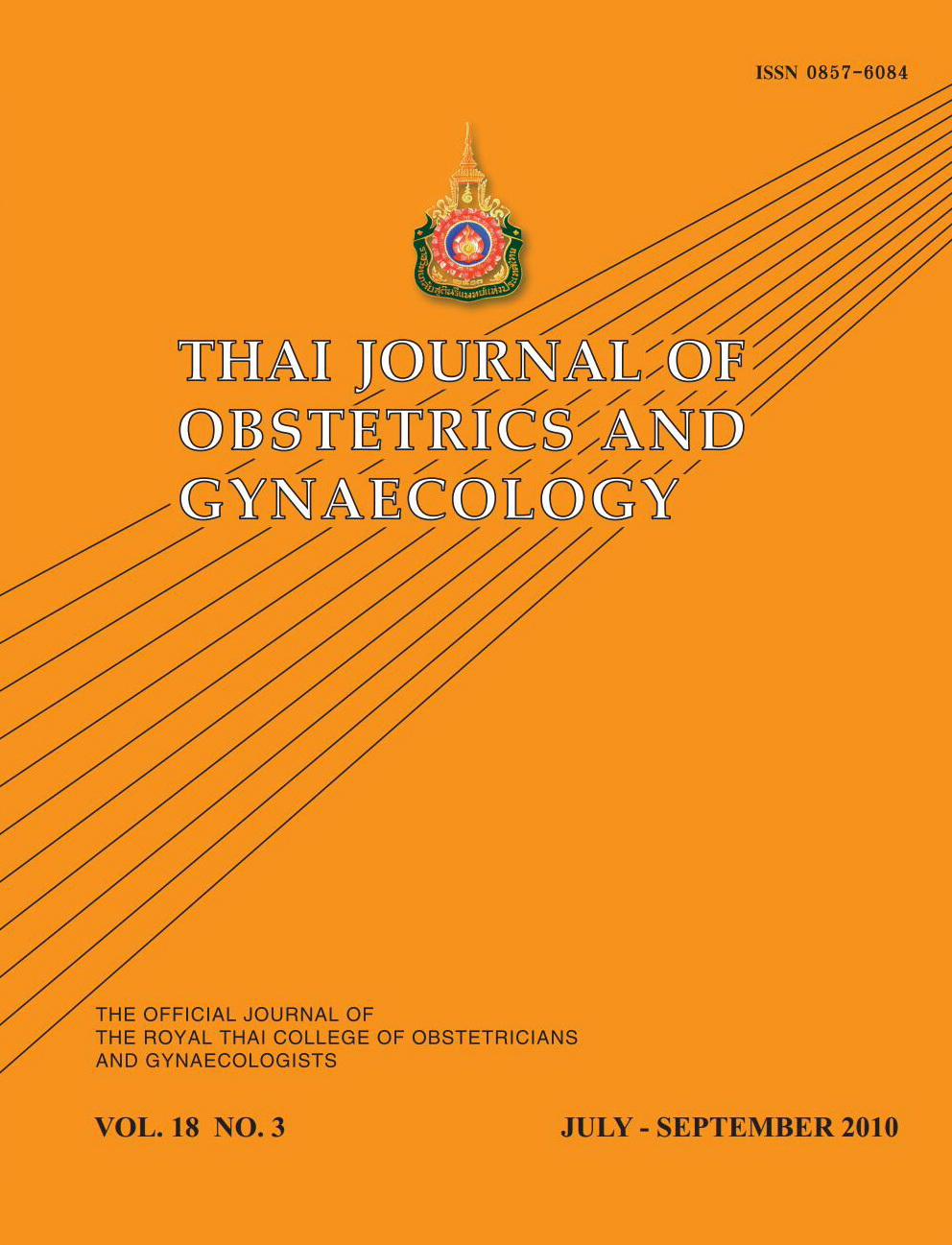Symphysis fundal height measurements in prediction of birthweight
Main Article Content
Abstract
Objective: To determine the sensitivity, specificity and predictive value of symphysis fundal height measurement in prediction of infant birthweight and to determine the level of symphysis fundal height as cut off values for low birthweight and high birthweight. We also aimed to examine the association between symphysis fundal height and birth asphyxia, shoulder dystocia and cesarean section rate.
Materials and Methods: A prospective study of 2,020 pregnant women who attended antenatal care and delivered at Maharat Nakorn Ratchasima Hospital from September, 2009 to December, 2009. Symphysis fundal height measurement and others data were collected at labor room. Analysis was done for correlation, sensitivity and specificity.
Results: The results of this study shown that the best significant predictor of birthweight from maternal characteristics is symphysis fundal height measurement. The value of low birthweight is 8.5% and the value of high birthweight is 1.8%. The best predictive symphysis fundal height value for low birthweight infant is < 30 cm. with the sensitivity of 88.9%, specificity of 79.7%, PPV 98.2%, NPV 39.4% . The best predictive symphysis fundal height value for high birthweight infant is > 38 cm. with the sensitivity of 97.3%, specificity of 96.4%, PPV 34.3%, NPV 99.9%. The level of symphysis fundal height > 38 cm. associated with has increase risk for cesarean section and shoulder dystocia.
Conclusion: Symphysis fundal height measurement is an effective screening test to predict newborn with low birthweight at the cut point of < 30 cm and high birthweight at the cut point of > 38 cm. This test was appropriate for screening because it is simple, widely available, non invasive and cheap.

